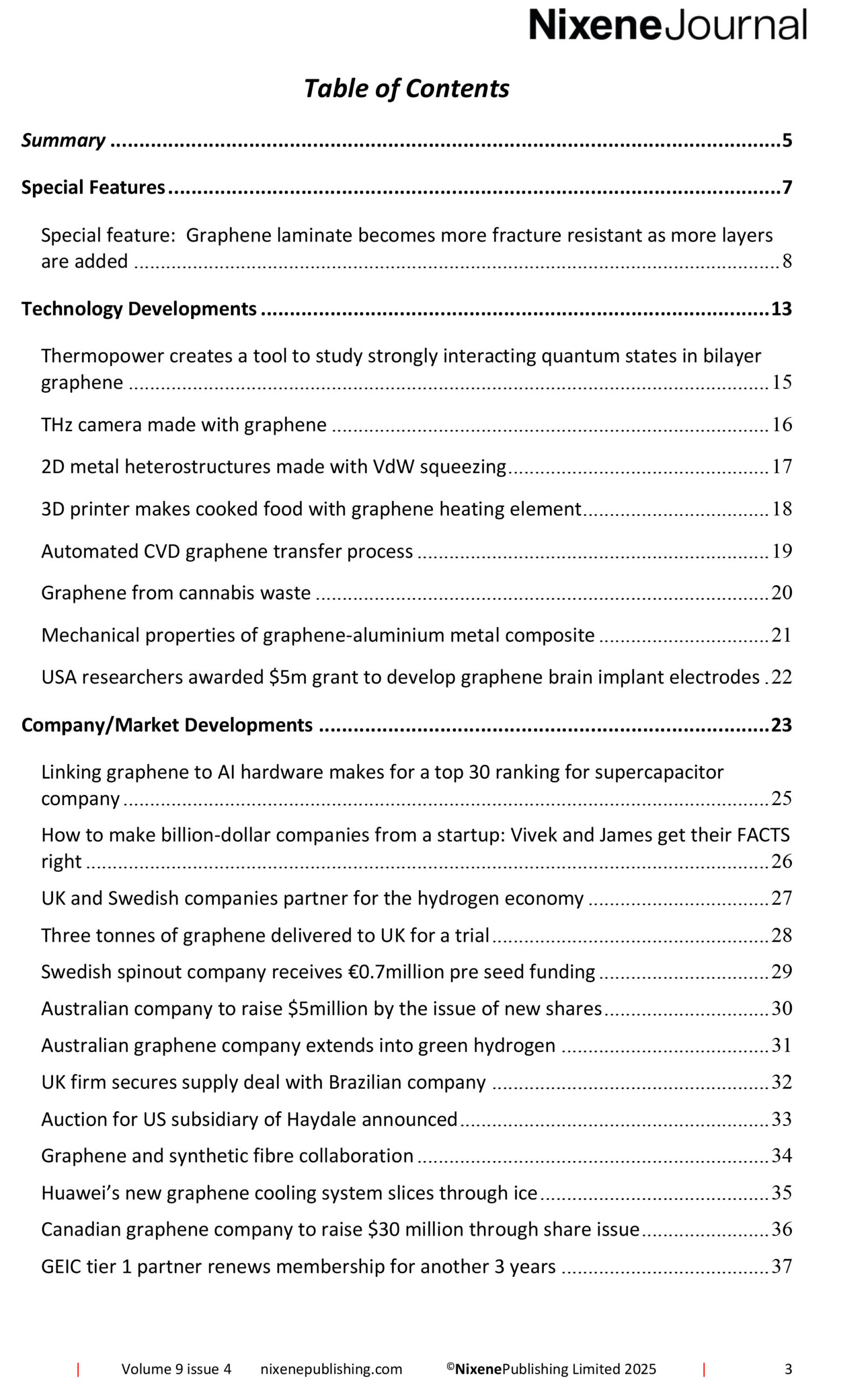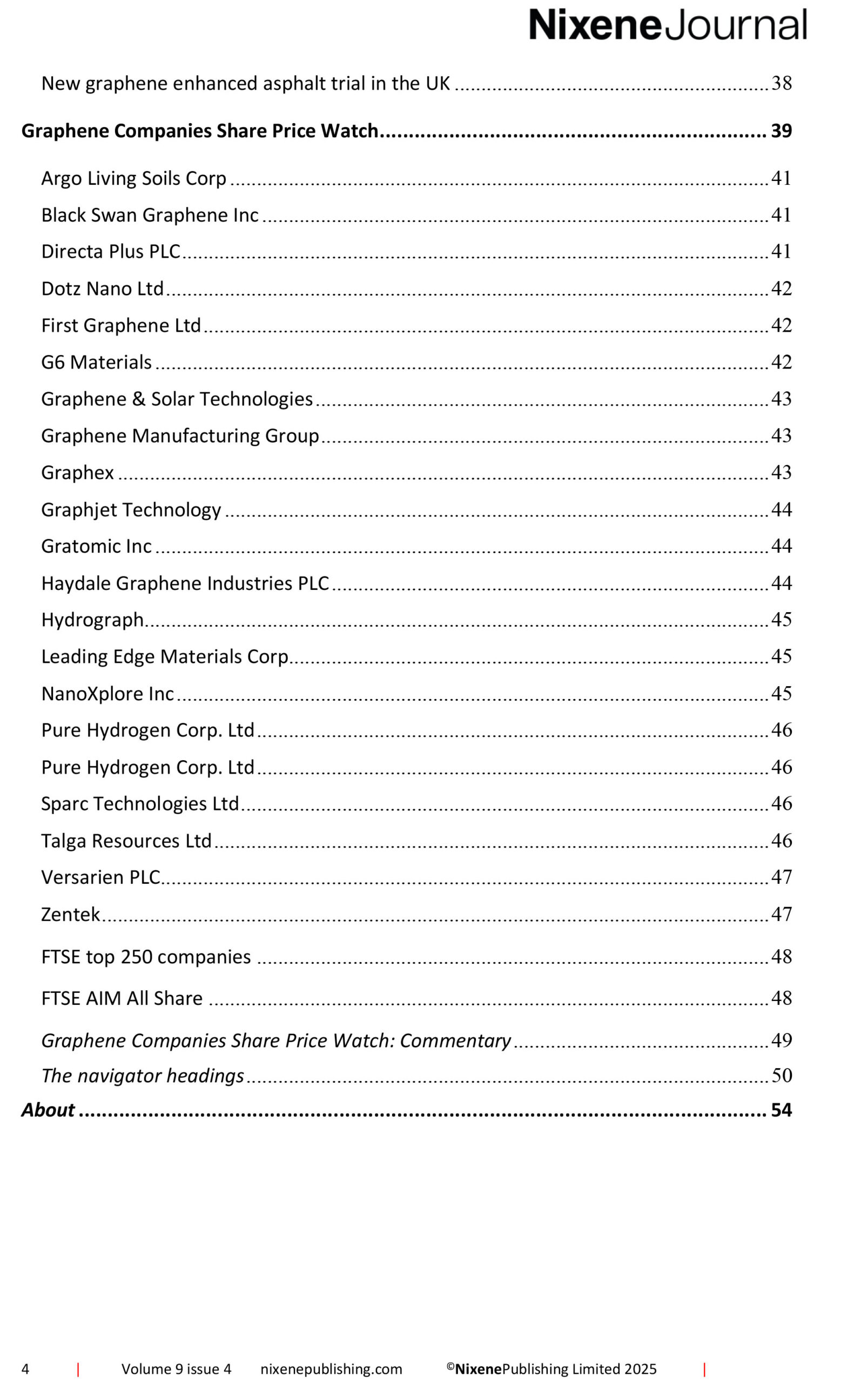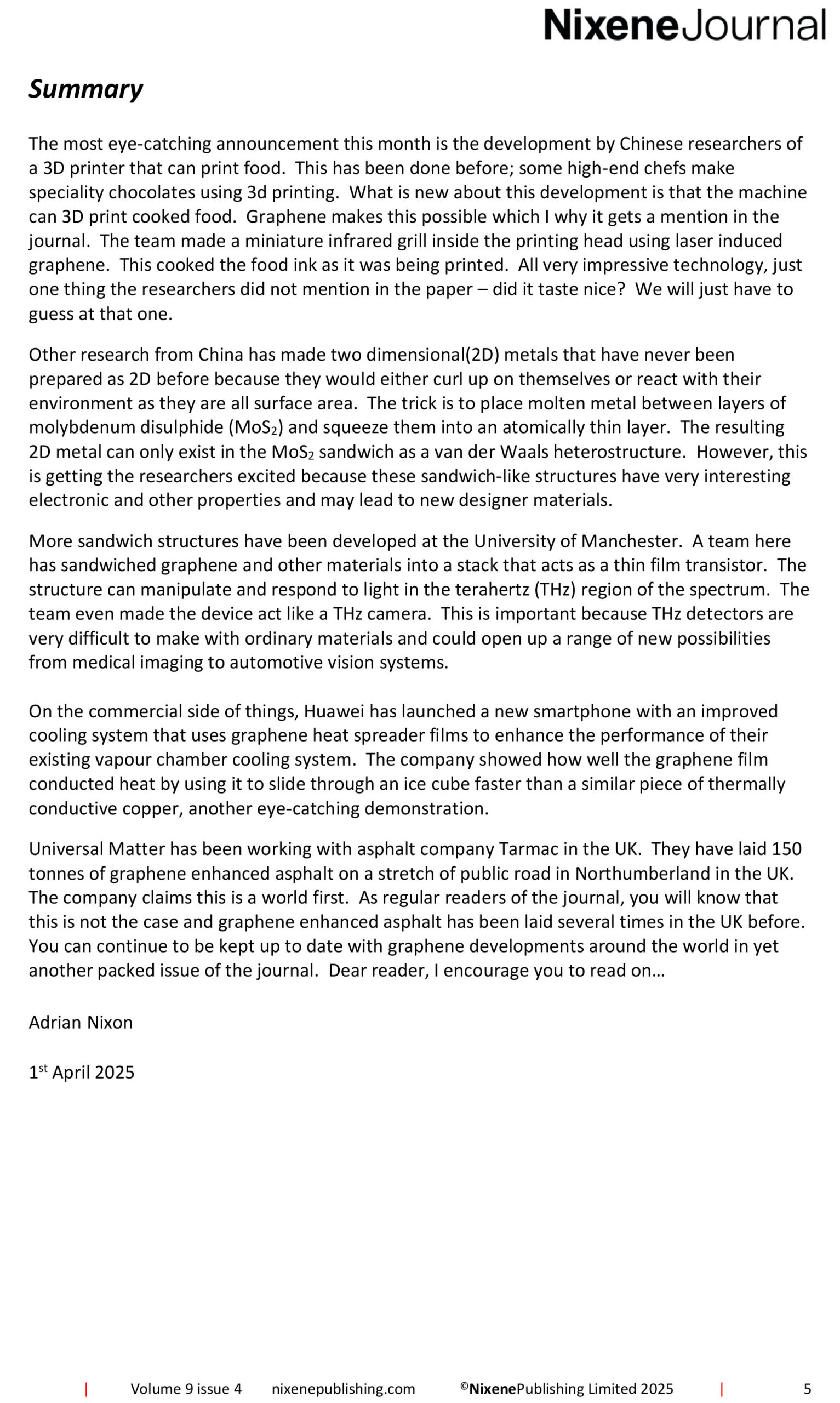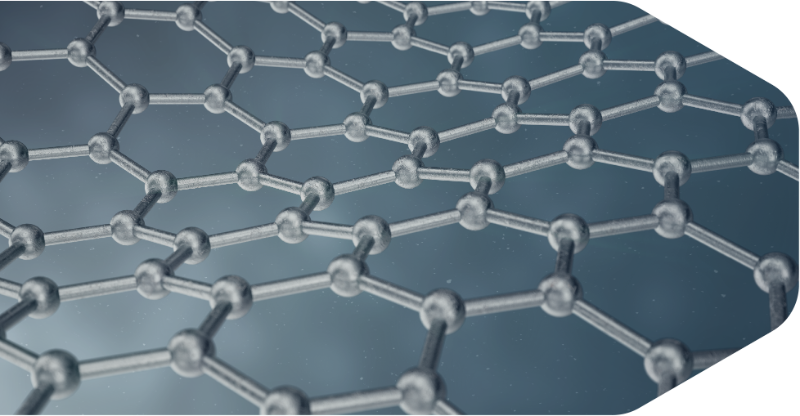Description
The most eye-catching announcement this month is the development by Chinese researchers of a 3D printer that can print food. This has been done before; some high-end chefs make speciality chocolates using 3d printing. What is new about this development is that the machine can 3D print cooked food. Graphene makes this possible which I why it gets a mention in the journal. The team made a miniature infrared grill inside the printing head using laser induced graphene. This cooked the food ink as it was being printed. All very impressive technology, just one thing the researchers did not mention in the paper – did it taste nice? We will just have to guess at that one.
Other research from China has made two dimensional(2D) metals that have never been prepared as 2D before because they would either curl up on themselves or react with their environment as they are all surface area. The trick is to place molten metal between layers of molybdenum disulphide (MoS2) and squeeze them into an atomically thin layer. The resulting 2D metal can only exist in the MoS2 sandwich as a van der Waals heterostructure. However, this is getting the researchers excited because these sandwich-like structures have very interesting electronic and other properties and may lead to new designer materials.
More sandwich structures have been developed at the University of Manchester. A team here has sandwiched graphene and other materials into a stack that acts as a thin film transistor. The structure can manipulate and respond to light in the terahertz (THz) region of the spectrum. The team even made the device act like a THz camera. This is important because THz detectors are very difficult to make with ordinary materials and could open up a range of new possibilities from medical imaging to automotive vision systems.
On the commercial side of things, Huawei has launched a new smartphone with an improved cooling system that uses graphene heat spreader films to enhance the performance of their existing vapour chamber cooling system. The company showed how well the graphene film conducted heat by using it to slide through an ice cube faster than a similar piece of thermally conductive copper, another eye-catching demonstration.
Universal Matter has been working with asphalt company Tarmac in the UK. They have laid 150 tonnes of graphene enhanced asphalt on a stretch of public road in Northumberland in the UK. The company claims this is a world first. As regular readers of the journal, you will know that this is not the case and graphene enhanced asphalt has been laid several times in the UK before. You can continue to be kept up to date with graphene developments around the world in yet another packed issue of the journal. Dear reader, I encourage you to read on…
Adrian Nixon
1st April 2025










